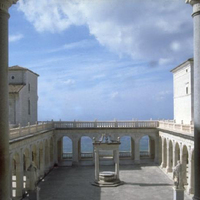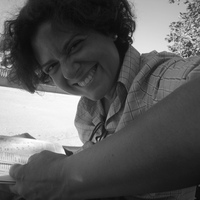
Daniela Raia
Archeologa
less
Related Authors
Giuseppe Falzone
Pontificio Istituto di Archeologia Cristiana
Rosa Maria Carra
Università degli Studi di Palermo
Elisabetta Sanna
University of Cagliari
Emma Vitale
Università degli Studi di Palermo
Fabio Cusimano
Veneranda Biblioteca Ambrosiana, Milano
Paola De Santis
Università degli Studi di Bari
isabella Baldini
Università di Bologna
Rosa Maria Cucco
Regione Siciliana
InterestsView All (19)









Uploads
Books by Daniela Raia
Papers by Daniela Raia
of the finds come from well-sealed layers of abandonment and decay, reliable indicators of the phases of use and abandonment of the cemetery, in a period between
the fourth and eighth centuries. The ceramic, glass and metal objects, used as a functional and ritual kit, are largely imported from Africa (lamps and vessels in
African red slip ware), from the Middle Tyrrhenian (amphorae) and partly produced regionally (common ware). In general, the emerged outline finds comparisons
with the contemporary Sicilian funerary contexts, with the specificity of the prolonged use of the cemetery until the beginning of the eighth century.
of the finds come from well-sealed layers of abandonment and decay, reliable indicators of the phases of use and abandonment of the cemetery, in a period between
the fourth and eighth centuries. The ceramic, glass and metal objects, used as a functional and ritual kit, are largely imported from Africa (lamps and vessels in
African red slip ware), from the Middle Tyrrhenian (amphorae) and partly produced regionally (common ware). In general, the emerged outline finds comparisons
with the contemporary Sicilian funerary contexts, with the specificity of the prolonged use of the cemetery until the beginning of the eighth century
of the finds come from well-sealed layers of abandonment and decay, reliable indicators of the phases of use and abandonment of the cemetery, in a period between
the fourth and eighth centuries. The ceramic, glass and metal objects, used as a functional and ritual kit, are largely imported from Africa (lamps and vessels in
African red slip ware), from the Middle Tyrrhenian (amphorae) and partly produced regionally (common ware). In general, the emerged outline finds comparisons
with the contemporary Sicilian funerary contexts, with the specificity of the prolonged use of the cemetery until the beginning of the eighth century.
of the finds come from well-sealed layers of abandonment and decay, reliable indicators of the phases of use and abandonment of the cemetery, in a period between
the fourth and eighth centuries. The ceramic, glass and metal objects, used as a functional and ritual kit, are largely imported from Africa (lamps and vessels in
African red slip ware), from the Middle Tyrrhenian (amphorae) and partly produced regionally (common ware). In general, the emerged outline finds comparisons
with the contemporary Sicilian funerary contexts, with the specificity of the prolonged use of the cemetery until the beginning of the eighth century